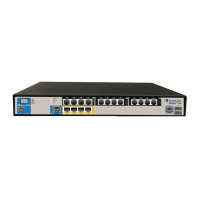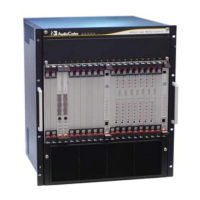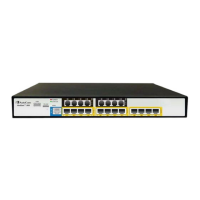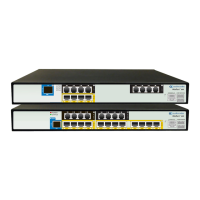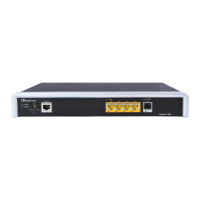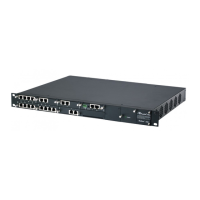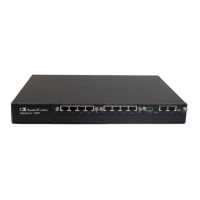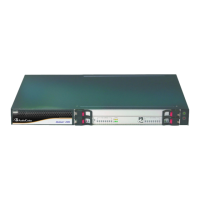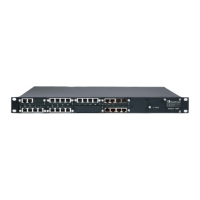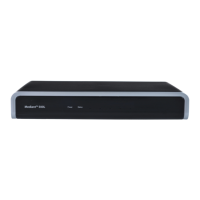CHAPTER16 Services
Mediant 800 Gateway & E-SBC | User's Manual
Parameter Value
Action Value $3
Row Rule Use Previous Condition
b. Assign the above manipulation rules to the relevant IP Groups:
◆ In the IP Group of the recorded call leg which sends this header, configure the
'Inbound Message Manipulation Set' parameter to 11 (i.e., rule configured in Index 0).
◆ In the IP Group of the SRS, configure the 'Outbound Message Manipulation Set'
parameter to 12 (i.e., rules configured in Index 1, 2 and 3).
RADIUS-based Services
The device supports Remote Authentication Dial In User Service (RADIUS) by acting as a
RADIUS client. You can use RADIUS for the following:
■ Authentication and authorization of management users (login username and password) to gain
access to the device's management interface.
■ Accounting where the device sends accounting data of SIP calls as call detail records (CDR)
to a RADIUS Accounting server (for third-party billing purposes).
Enabling RADIUS Services
Before you can implement any RADIUS services, you must enable the RADIUS feature, as
described in the procedure below.
➢ To enable RADIUS:
1. Open the Authentication Server page (Setup menu > Administration tab > Web & CLI folder
> Authentication Server).
2. Under the RADIUS group, from the 'Enable RADIUS Access Control' drop-down list, select
Enable.
3. Click Apply, and then reset the device with a save-to-flash for your settings to take effect.
Configuring RADIUS Servers
The RADIUS Servers table lets you configure up to three RADIUS servers. You can use RADIUS
servers for RADIUS- based management- user login authentication and/or RADIUS- based
accounting (sending of SIP CDRs to the RADIUS server).
When multiple RADIUS servers are configured, RADIUS server redundancy can be implemented.
When the primary RADIUS server is down, the device sends a RADIUS request twice (one
retransmission) and if both fail (i.e., no response), the device considers the server as down and
attempts to send requests to the next server. The device continues sending RADIUS requests to
the redundant RADIUS server even if the primary server returns to service later on. However, if a
device reset occurs or an HA switchover occurs in a High-Availability (HA) system, the device
sends RADIUS requests to the primary RADIUS server. By default, the device waits for up to two
seconds (i.e., timeout) for a response from the RADIUS server for RADIUS requests and
retransmission before it considers the server as down.
- 216 -
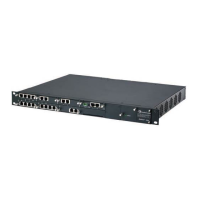
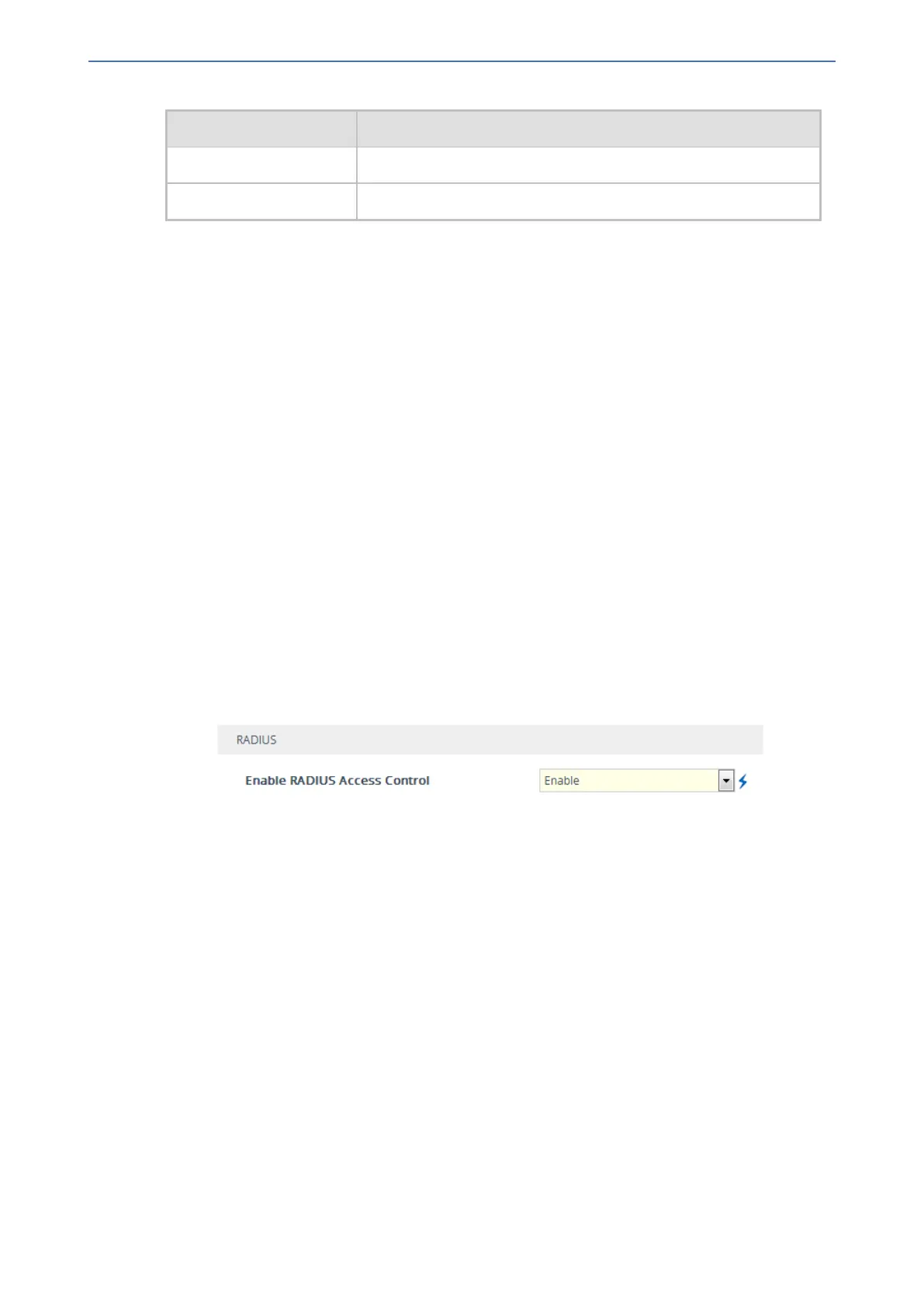